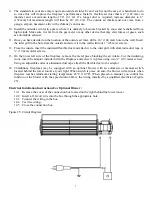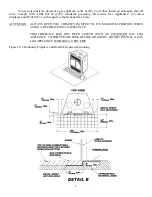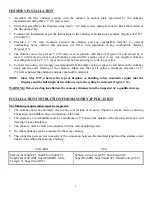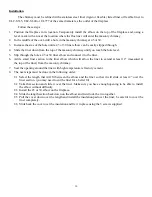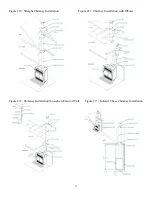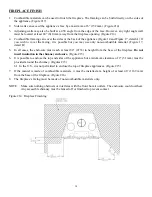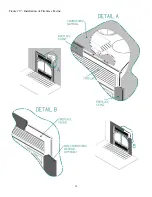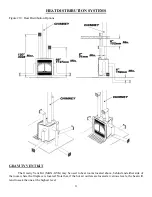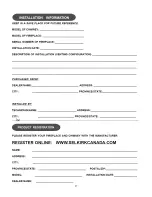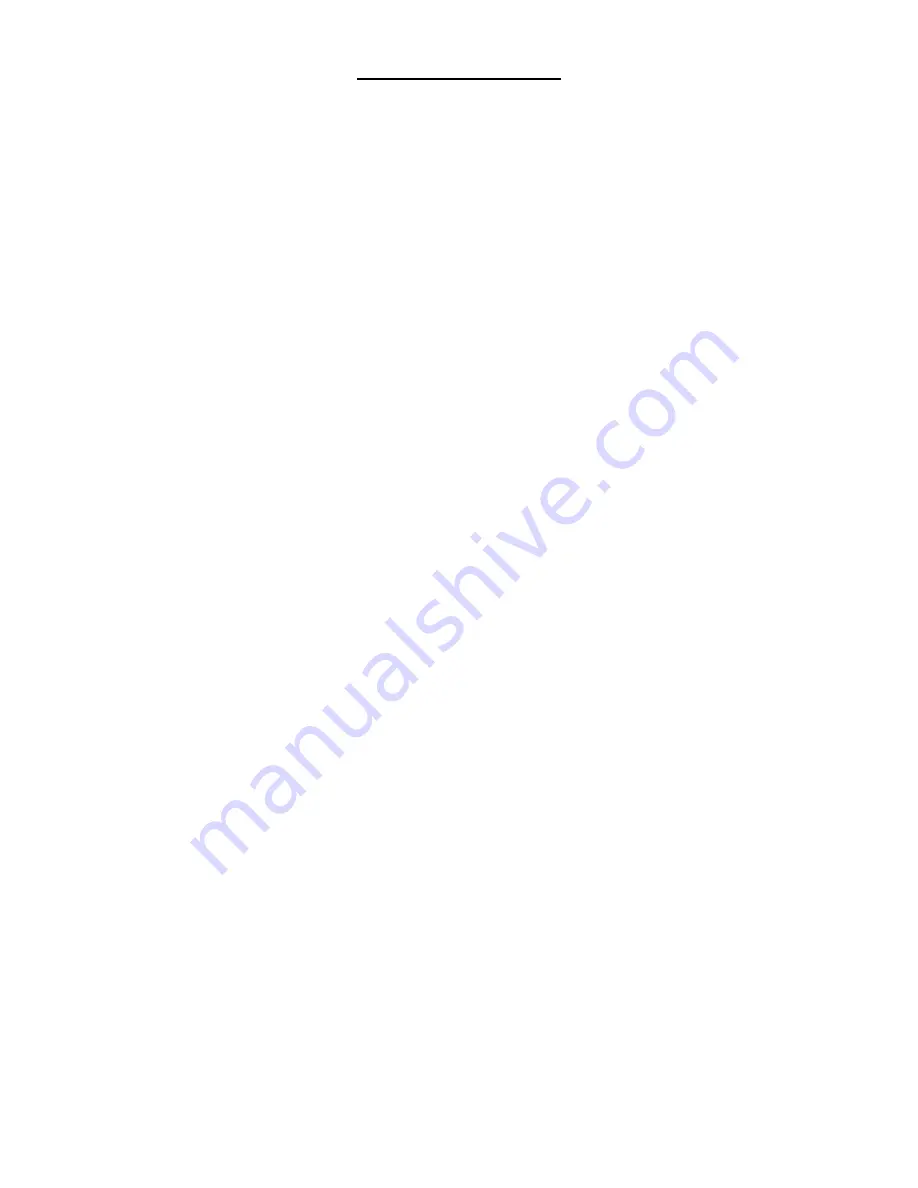
19
USE AND SAFETY
1. Teach children fireplace safety rules.
2. Do not use the fireplace under the following conditions:
2.1 Whenever a firebrick is missing or broken.
2.2 Whenever the ceramic glass is cracked or broken.
3. Never use flammable liquids to light or revive a fire and keep such products away from any heat source.
Before lighting a fire, make sure there are no flammable liquids, gases or fumes in the room.
4. Before starting each fire, open the flue damper using the key located in the middle behind the upper louver.
When the fireplace is hot, do not touch the damper key with your bare hands.
5. Open the air intake lever located on the left behind the lower louver.
6. Prevent smoke flow reversal by preheating the chimney flue. Just hold a torch made of rolled up newspaper
towards the smoke chamber for a few minutes.
7. Do not overfire unit. Selkirk fireplaces are designed to burn reasonable quantities of wood. Avoid making
overly intense fires that would damage the appliance.
DO NOT OVERHEAT
8. Use the grate made by Selkirk. Burn only the quantity of combustible it can contain. Do not burn garbage,
painted wood or wood that has been exposed to salt water.
9. Always have minimum of 1” accumulation of ashes at the bottom of the fireplace. The grate may deform if
no ashes are left.
10. When using the fireplace for the first times, make small fires to give the firebrick time to dry properly. The
appearance of fine cracks in the firebrick is normal and therefore not hazardous. It is not a matter for
concern.
11. During the first fires, you may detect a certain odor and the coating and oil protecting certain appliance
parts may smoke a little. If you open a window, these will quickly dispel.
12. It could also become necessary to open a window if the house is too airtight or if a fan is running.
13. Keep the firescreen closed at all times. If the fireplace is left unattended while the fire is still burning,
carefully close the glass doors. Adjust the air intake lever to its maximum position.
14. Expansion and contraction noises during the heating and cooling cycle are normal. It is not a matter for
concern.
15. Once the fire is out and the embers have cooled, close the flue and the air intake dampers until you prepare
to light the next fire.
NOTE: Make sure furniture, draperies, and any extra logs are at least 48” (1220 mm) away from the fireplace.
Summary of Contents for Chardonnay
Page 11: ...11 Figure 7 Minimum Chimney Height...
Page 12: ...12 Figure 8 Masonry Chimney Installation...
Page 15: ...15 Figure 15 Chimney Enclosure Chimney enclosure USA and Canada Chimney enclosure Canada only...
Page 16: ...16 Figure 16a Mantel Positioning...
Page 17: ...17 Figure 16b Combustible materials positioning A 48 in B Radius of 84 in C 84 in Min...
Page 18: ...18 Figure 17 Installation of Fireplace Facing...
Page 26: ...26...
Page 27: ...27...
Page 28: ...28...



